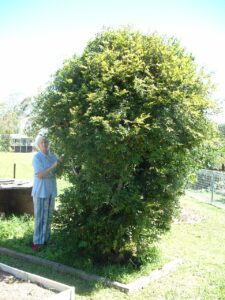
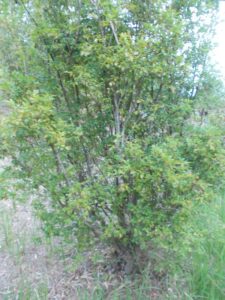
I have japoticaba fruit trees for sale in 45 litre grow-bags.They vary in price depending on their size.Usually $55 to $185. I also currently have some smaller ones at $28 each.This changes daily. If buying then you need to contact me to see what I have in stock on the day. I also have some japoticaba fruit trees that have larger fruits than the standard tree. Packing & posting etc is an extra charge to prices quoted herein.
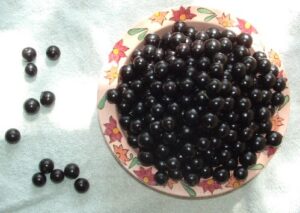
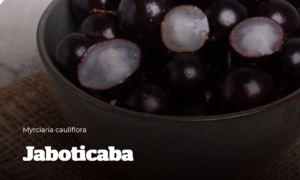
Watch in amazement how they harvest the tree grape orchards in Brazil
Myrciaria cauliflora
Jaboticaba — the Brazilian Grape Tree — is a slow growing evergreen tree with white flowers that form fruit directly on the trunks. The tree prefers moist, rich, lightly acidic soil; likes good drainage but frequent watering.
Jaboticabas can tolerate mild, brief freezes, but best to protect them from frost, especially while young. They have been known to survive temps as low as 26 degrees, or even the mid/lower 20’s, but it varies from tree to tree.
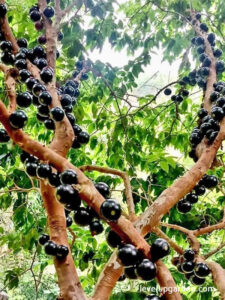
New growth on the Jaboticaba is pinkish-reddish in color, providing a beautiful contrast to the luscious deep greens. The bark of the tree peels off in chunks as it grows.
Trees grow multi-trunked and can be container grown, at least while young. Jaboticaba grows 10-15 ft tall here in the States, though up to 45′ tall in Brazil.
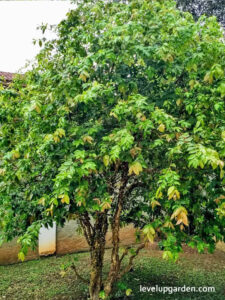
FRUITING
Jaboticaba can flower / fruit up to three times a year on mature trees. Fruits are ready to harvest about three to four weeks after pollination.
Fruit grows in clusters on the main trunk or trunks and also the larger, main branches of the tree. Fruit is purple-black in color and varies in size from 1″ diameter to as large as a small plum. Flavor is something like grapes, being sweet with an attractive mildly acid tang.
Fruit skins are slightly tougher than grapes which makes it easier to store and handle. Though the thin skins are edible, often the skins are discarded in favor of the sweet pulp inside. The riper the fruit, the sweeter the taste.
Jaboticaba fruits can be frozen whole for later use.
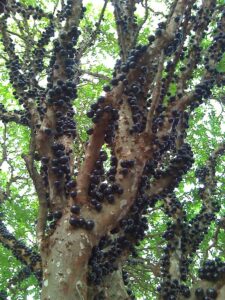
GROWING Your Jaboticaba
Like most edibles, jaboticaba respond well to organic soil amendments at all stages of development. Feed generously with organic composted chicken manure while young to encourage fast overall growth.
Supplement with greensand to add much needed trace minerals into the soil. Trace minerals will improve the immune system of the plant, providing greater tolerance of weather extremes. Trace minerals will also enhance the flavor of the fruit — true for most all edibles.
Jaboticaba is much like a swamp cherry in Brazil. Because it has a shallow root system, irrigation is a big help. It likes lots of frequent watering, though good drainage is essential.
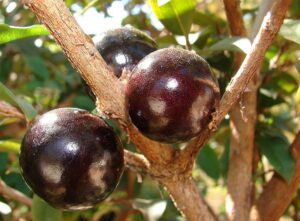
WHEN Will I Get Fruit?
Jaboticaba trees are self-pollinating, but fruit production will be increased with cross-pollination.
Jaboticaba can start producing fruit as young as five years old from seed — if you feed your tree with regular, adequate nutrition. A neglected tree in Florida’s sandy soils is likely to take 8-10 years before the first blossoms.
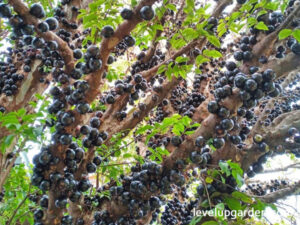
The tree needs to be about 8′ tall with a trunk diameter of about 3.5-4 inches to start flowering. Flowers can be hidden on the inside of the leaf canopy, and therefore not obvious to passersby.
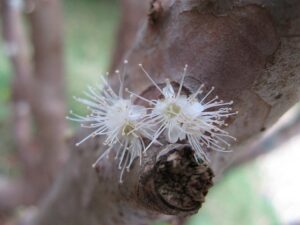
Our 3g trees are 2 year old seedlings — seedling grown is the #1 most popular way to propagate Jaboticaba. So you could get fruit in 3-5 years on average for 3g red, or in one year with a 30g purple.
FANTASTIC HOW THE FRUITS GROW ON THE TREE TRUNKS
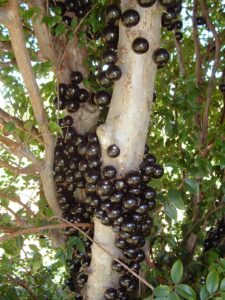
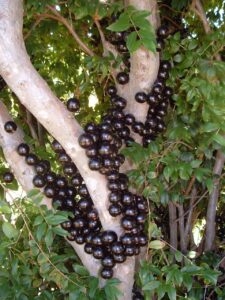
YES I HAVE JUPOTICABA FRUIT TREES 4 SALE HERE QLD OZ
 Any questions or if buying, contact me HERE
Any questions or if buying, contact me HERE


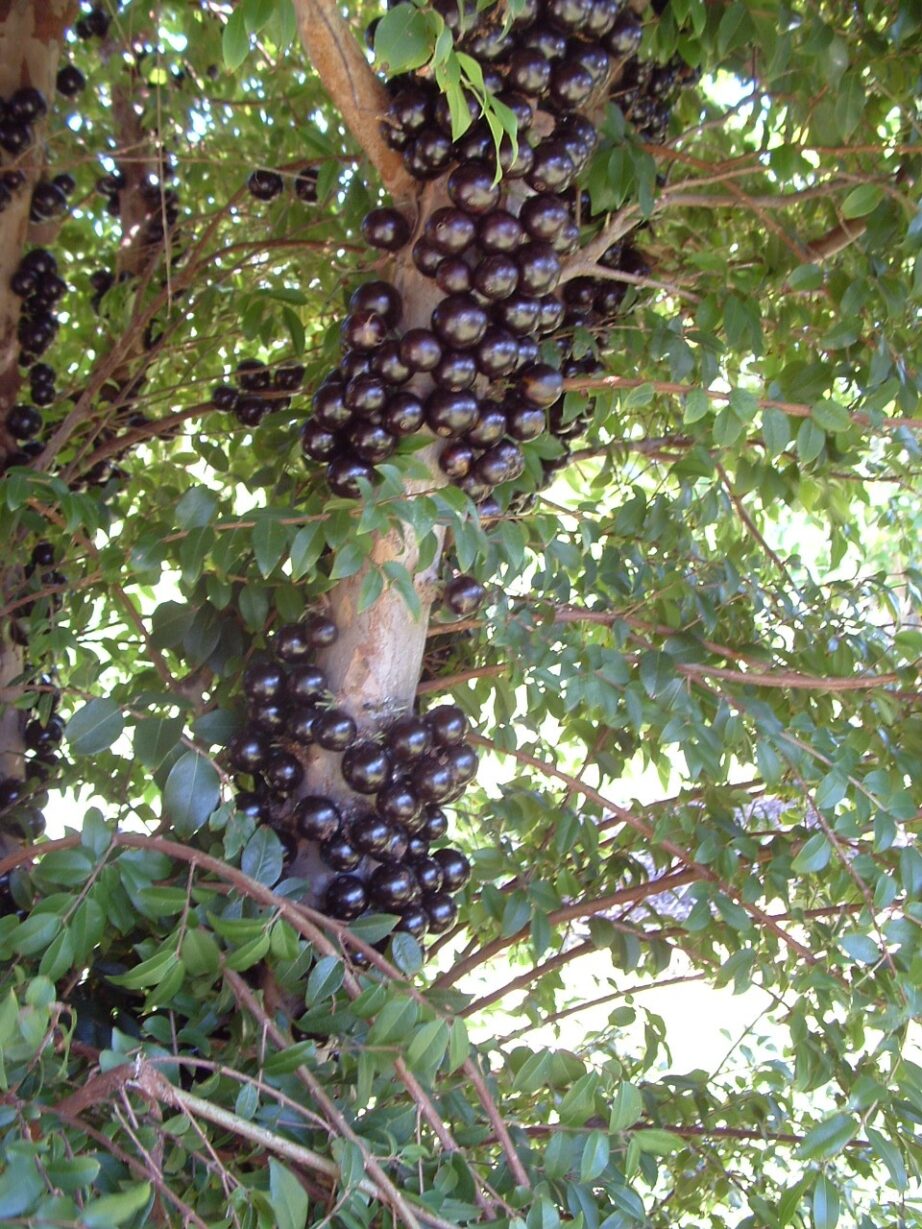
Recent Comments